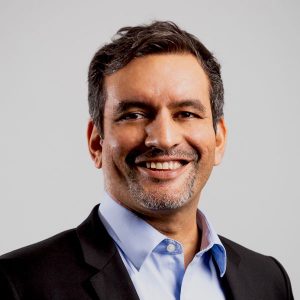A combination of Comprehensive Arthroscopic Management (CAM) and instability surgery enables Tim to look forward to an active life, after years of pain and fear of dislocation.
Nearly 40 years ago, Tim sustained serious injuries to his right shoulder whilst playing rugby. This injury resulted in recurrent dislocations, which has caused issues later in his life.

Professor Noorani has completely transformed my right shoulder. I was becoming restricted in what I was able to do, but from the results of my first MRI scan, Professor Noorani gave me the confidence that surgery would significantly improve my condition. After 48 hours post-surgery I stopped taking pain killers and within 7 days my shoulder was moving well. As well as the successful outcome, Professor Noorani is a lovely man and I am now looking forward to an active sporting life again.
TAGGED INProfessor Ali Noorani
Shoulder instability / dislocations
Comprehensive arthroscopic management (CAM)
Following traumatic rugby injury and recurrent dislocation, Tim makes an astonishing recovery after surgery performed by Professor Ali Noorani.

To try and resolve the issue, Tim had surgery in 1983 to stabilise the shoulder, which worked for a short period of time. Unfortunately, Tim also sustained further instability in his shoulder after a further rugby incident/injury. He had another operation in 1994, but since then his shoulder did not feel stable, his range of movement within the shoulder joint was reduced and he was starting to feel pain from developing arthritis.
The pain stopped Tim from playing tennis and made sleeping on his right side very uncomfortable. He remarks that he was very nervous to extend his arm because he had the feeling that he would dislocate the shoulder with certain movements.
Initially, Tim visited a surgeon to discuss his symptoms and was told that his next operation would be a shoulder replacement, which Tim was very keen to avoid. A few years later, Tim read an article in The Times on innovative orthopaedic surgery being offered to patients in the UK. Tim saw his GP and researched Professor Ali Noorani, one of the shoulder surgeons mentioned in the article.
Tim booked an appointment with Professor Noorani, who explained that X-rays of the shoulder showed loss of joint space suggestive of at least grade II/III osteoarthritis. Tim later had an MRI which showed some mechanical symptoms from the biceps and quite significant subacromial bursitis.
Following his diagnosis, Professor Noorani discussed a variety of treatment options with Tim and explained that his recommendation was to do a comprehensive arthroscopic management procedure (CAM) to stabilise the shoulder, reduce the pain and improve the range of motion. In October 2019, Professor Noorani and his team successfully performed a CAM operation and, within six days, were pleased to report that Tim was recovering very well.
Following his successful surgery, Tim reports that “The shoulder is feeling absolutely fantastic. I have no concern that, in the course of a normal life, my shoulder will dislocate.” Tim is now able to enjoy playing sport and explains that: “I don’t have any pain sleeping on my right side.” He also enjoys skiing and reports: “I feel that I will be able to ski without fear of another dislocation.”
To summarise his experience with Professor Noorani, Tim says: “Professor Noorani has completely transformed my right shoulder. I was becoming restricted in what I was able to do, but from the results of my first MRI scan, Professor Noorani gave me the confidence that surgery would significantly improve my condition. After 48 hours post-surgery I stopped taking pain killers and within 7 days my shoulder was moving well. As well as the successful outcome, Professor Noorani is a lovely man and I am now looking forward to an active sporting life again.”
Professor Noorani concludes that “Tim now feels his shoulder is stable, his range of motion is improving, and his pain is almost 0 out of 10 in most cases. I am very pleased he has had such a good outcome.”
He continues: “Tim had a fairly complex issue with the shoulder that had resulted from long-standing chronic traumatic instability. His shoulder had unfortunately developed arthritis due to the continued abnormal movement in his shoulder joint. He was way too young to have a shoulder replacement and that operation would not have given him a normal shoulder. He had a combination of a very stiff shoulder in certain directions and at the same time the shoulder had apprehension and felt unstable. This may seem paradoxical but unfortunately we often see this in very chronic traumatic dislocations. There is stiffness and arthritis due to the abnormal movement and natural compensating mechanisms which makes things worse in Tim’s case.
When we did the comprehensive arthroscopic management we had to address the torn biceps and ligaments as well as the injured rotator cuff. In addition we had to do a very careful selective release of scar tissue from the front of his shoulder joint to make his range of motion better and at the same time do very selective reattaching and tightening of ligaments on the under surface of the socket so that he would feel a bit more secure and stable.
The purpose of the surgery of course is to make sure it is stable and pain-free but also preserve the natural joint and hopefully avoid a shoulder replacement.”

Looking to speak to our team? Call us on 020 7046 8000 020 7046 8085
To book an appointment
or refer a patient
